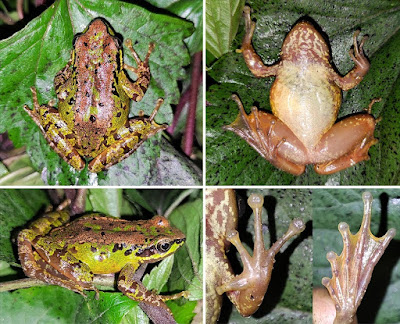 |
| Primulina clausa P.W.Li & M.Kang, in Li, Pan, Harris, Xu, Liu et Kang, 2021. |
Abstract
A new species of Gesneriaceae, Primulina clausa P.W.Li & M.Kang was described, which occurs in the karst areas of northern Guangxi Zhuang Autonomous Region of China. The new species is morphologically similar to P. obtusidentata (W.T.Wang) Mich.Möller & A.Weber, but can be readily distinguished by its short and prostrate peduncle, slightly unfolded bracts, appressed sepals, glabrous anthers, parietal placenta, and nearly straight capsules.
Keywords: Flora of Guangxi; Karst; Morphology; Subfamily Didymocarpoideae; Taxonomy
Primulina clausa P.W.Li & M.Kang, sp. nov.
Etymology:—The epithet “clausa” refers to the subtending bracts which fold the flowers or capsules. The Chinese name for this new species is “bì bāo bào chūn jù tái 闭苞报春苣苔”.
Peng-Wei Li, Bo Pan, A.J. Harris, Wei-Bin Xu, Ming-Tao Liu and Ming Kang. 2021. Primulina clausa, A New Species of Gesneriaceae from northern Guangxi, China. Phytotaxa. 510(2); 187–192. DOI: 10.11646/phytotaxa.510.2.8







































